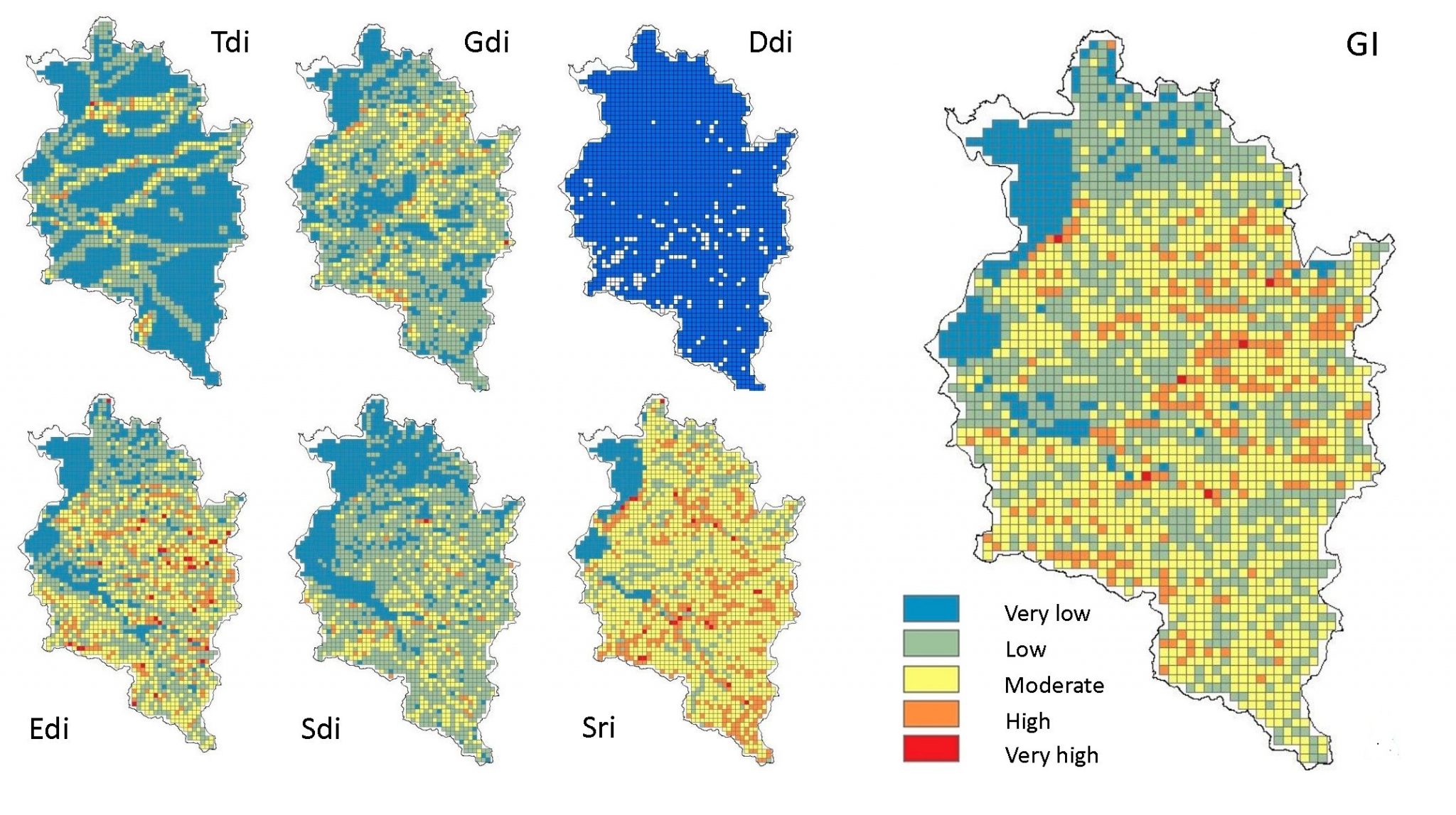
Geodiversity index mapping in alpine areas
Geodiversity mapping has become an established tool for assessing the value of the abiotic part of the landscape. We apply two methods, which have both been developed in the mountains of Vorarlberg and Liechtenstein, but have a wider application in alpine areas. The first is a region‐wide index‐based mapping that is designed with the purpose of generating, in a preliminary evaluation, an inventory of clusters of high geodiversity. The second method comprises detailed geomorphological mapping at a local scale and supports landscape planning and management by identifying potential geoconservation sites. The latter approach also enables the evaluation of the relationship between morphogenetic types and existing biotope data.
A geodiversity (index) map has been generated in ArcGIS for the entire area of Vorarlberg. It shows the spatial distribution of a combination of six abiotic factors (subindices) expressed as numeric values in five classes. Both conventional and unconventional data sets were used, ranging from field‐based geological maps to digital data sets acquired in airborne LiDAR surveys. In this approach, high geodiversity is found more often in areas of combined complex topography and varied geological substrata. The geodiversity map can be used to rapidly assess the occurrence of clusters of high geodiversity, which subsequently can be evaluated in detail using a landform‐based approach. We refer to the published literature for further information.

Geodiversity-index map of Vorarlberg. Grid size in all maps is 1 x 1 km. Tdi, tectonic diversity index; Gdi, geological diversity index; Ddi, drainage diversity index; Edi, elevation diversity index; Sdi, slope diversity index; Sri, solar radiation diversity index; GI, geodiversity index. Refer to Seijmonsbergen et al. (2018) for further information.
Literature
Seijmonsbergen, A.C., Jong, M.G.G. De, Hagendoorn, B., Oostermeijer, J.G.B. and Rijsdijk, K.F., 2018, Geodiversity mapping in alpine areas. In: Hoorn, C., Perrigo, A. and Antonelli, A. (eds.), Mountains, climate and biodiversity, 155-170. John Wiley & Sons, Hoboken, NJ.

